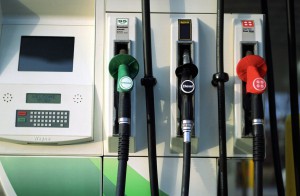
Gas prices are their high-water mark for 2015, but are expected to fall as crude oil prices stabilize.
The national average price of gasoline is $2.75 per gallon, which is the highest average of the year, according to the latest survey by AAA.
However, there is a good chance that average U.S. gas prices will drop soon due to stabilizing crude oil costs and as refineries complete seasonal maintenance, which would result in the cheapest summertime gas prices since 2009, the company suggested.
At the same time, the average fuel economy of new vehicles sold in the U.S. continues to improve, according to a new survey from the University of Michigan.
“This could be the year of the summer road trip with lower gas prices motivating millions of people to travel,” said Avery Ash, AAA spokesman. “Many drivers are likely to save hundreds of dollars this summer as gas prices remain more affordable than in recent years.”
Summer travel is expected to be busy, in part due to lower gas prices. About six in 10 Americans say they are more likely to take a road trip of 50 miles or more in 2015 if gas prices remain near recent levels, according to a AAA survey.
The Energy Information Administration (EIA) recently estimated that gasoline demand for the week leading up to Memorial Day was the highest weekly total since August 2007, which may also indicate that many people are taking advantage of lower gas prices to travel.
Meanwhile, supplies of both oil and gasoline remain abundant, which should help keep gas prices much lower than in recent years. U.S. commercial crude oil stocks are about 22% higher than a year ago, while gasoline stocks are about 4% higher than last year, according to the EIA.
Historically, the price of gasoline tends to drop or remain flat in June as refineries complete seasonal maintenance and gear up production for the busy summer driving season. Gas prices have declined by an average of 12 cents per gallon in June over the past five years. This production trend likely will continue this year, which means gasoline supplies could soon grow even more plentiful.
(As weather warms, May auto sales sizzle. For more, Click Here.)
Despite the expectations for lower prices, there are a number of factors that could send summertime gas prices higher, such as increased fighting in the Middle East, unexpected problems at major refineries or powerful Atlantic hurricanes
Oil production in the U.S. appears to have reached a balance in supply and demand given that many producers reportedly can break even with oil at $50-$60 per barrel.
Domestic oil prices may not rise significantly in the near term because any further increase in price could lead to a rise in production, which would then drive prices lower.
(Click Here for details about Japanese automakers gaining U.S. marketshare.)
The gas mileage of new vehicles sold in the U.S. was up last month—its highest mark since last August, according to researchers at U-M’s Transportation Research Institute (UMTRI).
The average fuel economy (window-sticker values) of cars, light trucks, vans and SUVs purchased in May was 25.5 miles per gallon, up from 25.2 mpg in April. “The improvement likely reflects the increased price of gasoline in May,” said Michael Sivak, a research professor at UMTRI.
Overall, fuel economy is up 5.4 mpg from October 2007, the first full month of monitoring by Sivak and colleague Brandon Schoettle.
(To see more about the prospect of a 20-million unit sales year, Click Here.)
However, the average vehicle fuel economy during the first eight months of this model year – October 2014 through May 2015 – was 25.3 mpg and has stayed the same as during the preceding model year, which ran from October 2013 through September 2014.
